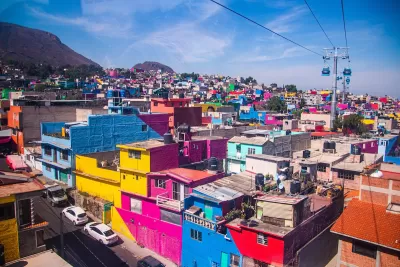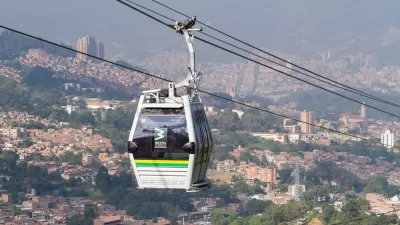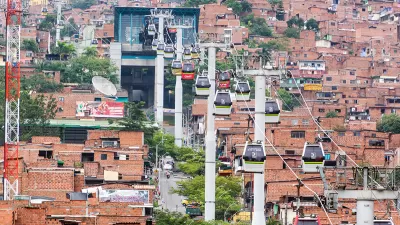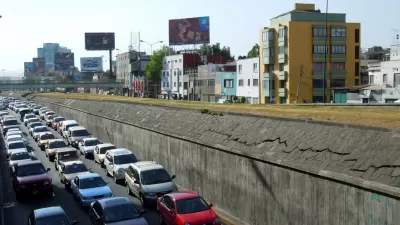Unlike many aerial gondolas, Mexico City’s Cablebus is largely used by commuters and residents from communities farther from the city center.

A three-year-old aerial cable car system is transforming Mexico City’s transportation network and making the trip into the central city faster and easier for people living in peripheral neighborhoods.
As Alex Vasquez explains in Bloomberg CityLab, “The Cablebus system has more than halved trips that used to take an hour and a half by bus or taxi, according to Mexico City's Mobility Ministry. In the sprawling megacity of some 22 million people, faster connections were needed for residents living far from the center and the major subway lines.”
Unlike many other aerial tram systems around the world, Mexico City’s system primarily serves residents in far-flung neighborhoods rather than tourists, “Most of the systems, like the ones in Medellin or in Caracas, Venezuela, move between 15,000 and 40,000 people a day; the Cablebus moves between 70,000 and 80,000 people a day.”
Residents perceive the Cablebus as safer than the city’s other transit options such as the subway system, where the city has created women-only cars to create safer spaces for women travelers, “Gisela Mendez, founder of urban development consultancy Ensamble Urbano, said that situations of harassment and violence against women are considerably reduced on the Cablebus compared to other transport systems.” For people whose work gives them less traditional schedules, the Cablebus’s round-the-clock schedule is also more convenient than buses or trains, whose services are concentrated around typical rush hours.
FULL STORY: The Cablebus Transformed Commutes in Mexico City’s Populous Outskirts

Planetizen Federal Action Tracker
A weekly monitor of how Trump’s orders and actions are impacting planners and planning in America.

Restaurant Patios Were a Pandemic Win — Why Were They so Hard to Keep?
Social distancing requirements and changes in travel patterns prompted cities to pilot new uses for street and sidewalk space. Then it got complicated.

Map: Where Senate Republicans Want to Sell Your Public Lands
For public land advocates, the Senate Republicans’ proposal to sell millions of acres of public land in the West is “the biggest fight of their careers.”

Maui's Vacation Rental Debate Turns Ugly
Verbal attacks, misinformation campaigns and fistfights plague a high-stakes debate to convert thousands of vacation rentals into long-term housing.

San Francisco Suspends Traffic Calming Amidst Record Deaths
Citing “a challenging fiscal landscape,” the city will cease the program on the heels of 42 traffic deaths, including 24 pedestrians.

California Homeless Arrests, Citations Spike After Ruling
An investigation reveals that anti-homeless actions increased up to 500% after Grants Pass v. Johnson — even in cities claiming no policy change.
Urban Design for Planners 1: Software Tools
This six-course series explores essential urban design concepts using open source software and equips planners with the tools they need to participate fully in the urban design process.
Planning for Universal Design
Learn the tools for implementing Universal Design in planning regulations.
Heyer Gruel & Associates PA
JM Goldson LLC
Custer County Colorado
City of Camden Redevelopment Agency
City of Astoria
Transportation Research & Education Center (TREC) at Portland State University
Camden Redevelopment Agency
City of Claremont
Municipality of Princeton (NJ)





























